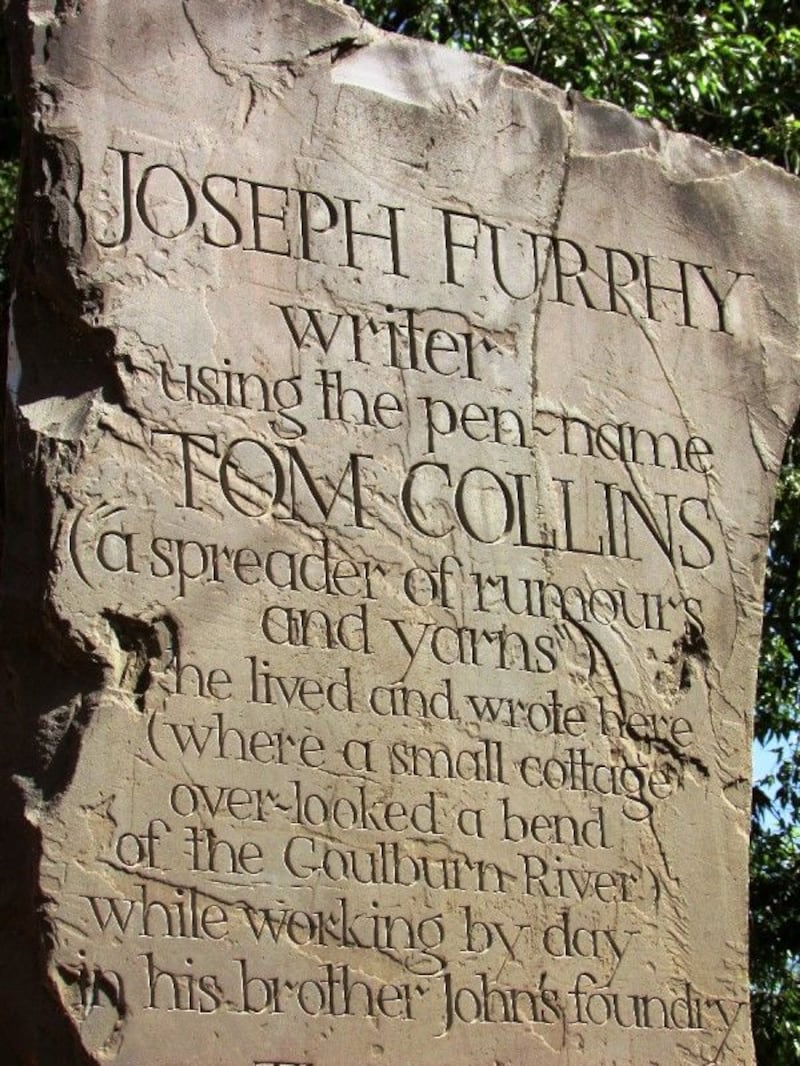Joseph Furphy, a pioneering Australian poet and novelist, was born on September 26th, 1843, the younger brother of John Furphy, who established a highly successful manufacturing business making wheeled water tanks that were ideal for transporting water on Australian farms.
The brothers’ parents were Samuel Furphy, a farmer, and his wife Judith, née Hare. They had arrived in Australia from Co Armagh in 1841 as bounty immigrants. They had been selected by colonists who then paid for their passage and employed them on arrival. Whereas John grew up to be a business man who put his energies into his company and into the Methodist church, Joseph was a more unpredictable character.
The family moved to Kyneton in Victoria where Samuel set up a corn and hay business. Joseph became his agent in the district. He got married in 1867 after which he acquired some land and set himself up as a farmer. Six difficult years in which he struggled to make the land productive persuaded him to change direction.
In 1873 he sold the farm, bought a team of bullocks, and set up business as a carter in the Riverina district of New South Wales. He was noted for his optimistic outlook and he started to write long entertaining letters to his mother. Unlike most of the bullock drivers and farm hands, Joseph was teetotal and he tried to promote the value of abstinence to his fellow rural workers.
READ MORE
The periodic droughts that afflict Australia leave chaos in their wake. Joseph’s carting business was one such casualty and he moved back to Victoria and began to work with his brother John in his iron foundry at Shepparton. At night, Furphy continued to read widely, attempting to understand the place he inhabited and the people who lived there.
He was a kind man and was respected by those who got to know him. By the 1890s Joseph found an outlet for his ideas in the form of articles for the Bulletin, a magazine first published in Sydney in 1880. With the encouragement of his friend Kate Baker (1861-1953), a teacher, who was born on April 23rd, 1861 at Cappoquin, Co Waterford, he wrote about his ideas on life and the future of mankind. This project occupied his spare time as he wrote thousands of words.
Joseph Furphy finished his great work Thus is Life in April 1897 and approached the Bulletin as a potential publisher. Its editor, Alfred George Stephens, found the manuscript too long-winded, but thought it had literary qualities. In fact Stephens thought the book had the potential to become a classic, so offered to edit the work and Furphy accepted. He removed two large sections and in 1903 it was published, with Furphy writing under the name Tom Collins.
The book attracted admiration from critics, but sales were disappointing. The two sections that Stephens had removed were eventually published as separate books, but they too were slow to sell; it wasn’t until the 1940s that the final book was published.

Furphy’s reputation grew slowly. As Manning Clark wrote in the Australian Dictionary of Biography, he believed that “by a blending of the teaching of the Sermon on the Mount and the Enlightenment, humanity would move out of the darkness into the light. He believed that by such moral persuasion a good time would come for the whole of humanity”.
Joseph Furphy moved to Clermont in Western Australia after the publication of his novel Such is Life, accompanied by his wife and two sons, where he died in 1912. The novel Such is Life by Tom Collins (Joseph Furphy) is regarded as a classic book of Australian literature.
Kate Baker kept his memory alive by publishing novels, letters and poems and gave lectures during her long life. She died in 1853 in Camberwell, Victoria.
Joseph Furphy is known today as the father of the Australian novel — a title that would have surprised this son of an Irish emigrant.
This Extraordinary Emigrants article was written by Dr J Patrick Greene, CEO and Museum Director of EPIC The Irish Emigration Museum in Dublin’s Docklands, an interactive museum that tells the story of how the Irish shaped and influenced the world













